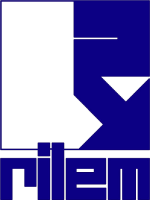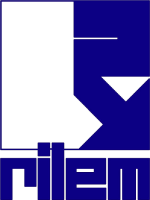Events calendar
EAC Course Series - Computer Modelling and Durability Workshop
Both computational modeling and experimental measurements are crucial for improving the assured delivery, performance, and sustainability of concrete.
For the last 22 years, this workshop has provided a forum for more than 600 students, faculty, and researchers from industry and government to learn more about computational and experimental methods that are being used to understand, predict, and improve concrete performance.
This year, the workshop's goals are two-fold:
1. Provide a background on the theoretical, computational, and experimental approaches to understanding the processing and performance of concrete materials, and
2. Show how this background can be used to address practical aspects of concrete durability.
To facilitate this, the three-day computer modeling workshop will be supplemented with a two-day short course on concrete durability.
Agenda:
The first three days of this year's workshop will focus on the computational and experimental materials science of concrete, including simulation of microstructural development and prediction of physical properties. "Microstructure" ranges from nanometer to meter length scales, while physical properties include pressure-driven fluid transport, rheology, and mechanical properties. Lectures on experimental methods will show how techniques like neutron scattering, electron microscopy, and various X-radiation probes like diffraction and tomography are used to inform and validate models. This portion of the workshop will feature a series of tutorial-style lectures, including a detailed hands-on tutorial on the installation and use of NIST's Virtual Cement and Concrete Testing Laboratory software. Workshop participants will be given an opportunity to describe their own technical interests in 15-minute presentations.
The final two days of this year's workshop will focus on more pragmatic issues surrounding concrete durability. Guest lecturers will describe the theoretical and experimental underpinnings of available standard test methods, models, and software for assessing concrete durability. Areas where improvements in these tools are needed will be highlighted, and strategies for making those improvements will be discussed. In addition, speakers will give demonstrations of using prediction tools to solve real-world problems.
A more detailed program will be available on the website of the workshop in the coming weeks.
Additional information can also be found at:
http://www.nist.gov/el/building_materials/modeling-workshop.cfm
For the last 22 years, this workshop has provided a forum for more than 600 students, faculty, and researchers from industry and government to learn more about computational and experimental methods that are being used to understand, predict, and improve concrete performance.
This year, the workshop's goals are two-fold:
1. Provide a background on the theoretical, computational, and experimental approaches to understanding the processing and performance of concrete materials, and
2. Show how this background can be used to address practical aspects of concrete durability.
To facilitate this, the three-day computer modeling workshop will be supplemented with a two-day short course on concrete durability.
Agenda:
The first three days of this year's workshop will focus on the computational and experimental materials science of concrete, including simulation of microstructural development and prediction of physical properties. "Microstructure" ranges from nanometer to meter length scales, while physical properties include pressure-driven fluid transport, rheology, and mechanical properties. Lectures on experimental methods will show how techniques like neutron scattering, electron microscopy, and various X-radiation probes like diffraction and tomography are used to inform and validate models. This portion of the workshop will feature a series of tutorial-style lectures, including a detailed hands-on tutorial on the installation and use of NIST's Virtual Cement and Concrete Testing Laboratory software. Workshop participants will be given an opportunity to describe their own technical interests in 15-minute presentations.
The final two days of this year's workshop will focus on more pragmatic issues surrounding concrete durability. Guest lecturers will describe the theoretical and experimental underpinnings of available standard test methods, models, and software for assessing concrete durability. Areas where improvements in these tools are needed will be highlighted, and strategies for making those improvements will be discussed. In addition, speakers will give demonstrations of using prediction tools to solve real-world problems.
A more detailed program will be available on the website of the workshop in the coming weeks.
Additional information can also be found at:
http://www.nist.gov/el/building_materials/modeling-workshop.cfm
See all events
from Monday 16 July
to Friday 20 July 2012
National Institute of Standards and Technology, Building 101, Lecture Room B
Gaithersburg, Maryland 20899, USA
Location
National Institute of Standards and Technology, Building 101, Lecture Room B
Gaithersburg, Maryland 20899, USA
No comment
Log in to post comment. Log in.





